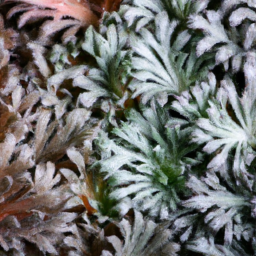
Understanding the Basics of Mixing Plant Colors and Textures
Introduction
The art of mixing plant colors and textures is a delightful way to create visually stunning and harmonious gardens. By carefully selecting and combining various plant species, you can transform your outdoor space into a vibrant and captivating oasis. In this guide, we will explore the fundamental principles of mixing plant colors and textures, providing you with the knowledge and inspiration to create your own botanical masterpiece.
Exploring Plant Colors
Colors play a crucial role in garden design, evoking different emotions and setting the overall mood. Understanding the color wheel and its principles is essential when it comes to mixing plant colors effectively. Let’s dive into the world of plant colors:
Primary Colors
The primary colors in the plant world are red, blue, and yellow. These colors cannot be created by mixing other colors and are the building blocks for all other hues. Incorporating primary-colored plants in your garden can add a bold and vibrant touch to your overall design.
For example, consider planting red roses, blue delphiniums, and yellow marigolds together. The contrasting primary colors will create a visually striking and captivating display.
It’s important to note that primary colors can also be combined to create secondary colors, such as purple (blue + red) and orange (red + yellow).
Complementary Colors
Complementary colors are located opposite each other on the color wheel and create a dynamic and harmonious contrast when paired together. By mixing complementary plant colors, you can achieve a visually pleasing and balanced composition.
For instance, combining purple and yellow plants, such as lavender and coreopsis, will create a stunning contrast that catches the eye. Similarly, red and green, like roses and ferns, can create a vibrant and harmonious combination.
Analogous Colors
Analogous colors are located next to each other on the color wheel and create a sense of harmony and unity. Mixing analogous plant colors can result in a soothing and cohesive garden design.
For example, blending various shades of pink, such as peonies, roses, and carnations, will create a soft and romantic atmosphere. Similarly, combining different hues of blue, like hydrangeas and forget-me-nots, can evoke a sense of tranquility.
Embracing Plant Textures
Textures add depth and visual interest to your garden, enhancing the overall aesthetic appeal. By incorporating plants with different textures, you can create a captivating landscape that engages multiple senses. Let’s explore the world of plant textures:
Fine Textures
Plants with fine textures have delicate and intricate foliage or flowers. These plants create a sense of airiness and can be used to soften the overall look of your garden. Fine-textured plants work well as borders or fillers in a garden bed.
Consider incorporating plants like baby’s breath, ferns, or astilbes to add a touch of elegance and delicacy to your garden. These plants will create a subtle contrast when paired with bolder textures.
Coarse Textures
Coarse-textured plants have bold and robust foliage or flowers that make a strong visual statement. These plants add a sense of drama and can serve as focal points within your garden design.
For a striking visual impact, incorporate plants like hostas, ornamental grasses, or yuccas. Their large leaves or spiky forms will create a bold contrast when surrounded by finer textures.
Mixed Textures
Mixing plant textures is an effective way to create a visually dynamic and engaging garden. By combining plants with different textures, you can achieve a harmonious balance between delicate and bold elements.
For example, pairing the fine-textured foliage of Japanese maple with the coarse-textured blooms of hydrangeas can create a visually captivating combination. Similarly, combining the feathery foliage of ornamental grasses with the smooth leaves of hostas can add an interesting contrast to your garden design.
Conclusion
The art of mixing plant colors and textures is a creative and rewarding endeavor. By understanding the basics of color theory and exploring the diverse range of plant textures, you can design a garden that is visually captivating and harmonious. Remember to experiment, trust your instincts, and have fun as you embark on this botanical journey. Happy gardening!
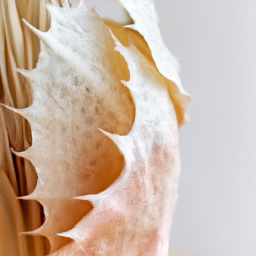
The Art of Mixing Plant Colors and Textures
2. Choosing the Right Color Palette for a Harmonious Plant Combination
Creating a harmonious plant combination involves more than just selecting plants randomly. The colors and textures of the plants play a crucial role in achieving a visually appealing and balanced garden. By understanding the art of mixing plant colors and textures, you can create stunning displays that will enhance your outdoor space. In this guide, we will explore the steps to choose the right color palette for a harmonious plant combination.
Understanding Color Theory
Before diving into the process of selecting plant colors, it is essential to have a basic understanding of color theory. Colors can be classified into primary, secondary, and tertiary colors. Primary colors include red, blue, and yellow. Secondary colors are created by mixing two primary colors, such as orange (red + yellow), green (blue + yellow), and purple (red + blue). Tertiary colors are formed by combining a primary color with a neighboring secondary color.
Colors can also be categorized as warm or cool. Warm colors, like red, orange, and yellow, create a sense of energy and vibrancy. Cool colors, such as blue, green, and purple, evoke a feeling of calmness and tranquility. Understanding the characteristics of different colors will help you in creating a visually appealing plant combination.
When selecting plant colors, consider the overall mood and atmosphere you want to create in your garden. Do you want a vibrant and energetic space, or a more serene and relaxing environment? Once you have a clear vision, you can proceed to the next step.
Creating a Color Palette
Creating a color palette for your plant combination involves selecting a range of colors that work well together. Here are the steps to follow:
Step 1: Choose a Dominant Color
Start by selecting a dominant color that will serve as the anchor for your combination. This color will be the most prominent and will set the tone for the entire display. Consider the existing colors in your garden or the surroundings to ensure a harmonious blend. For example, if your garden features warm tones, a dominant color like red or orange will complement the existing palette.
Step 2: Add Contrasting Colors
Once you have chosen a dominant color, it’s time to add contrasting colors to create visual interest. Contrasting colors are those that are opposite each other on the color wheel. For example, if your dominant color is blue, the contrasting colors would be orange or yellow. These contrasting colors will add depth and excitement to your plant combination.
Step 3: Incorporate Harmonizing Colors
In addition to the dominant and contrasting colors, it’s important to include harmonizing colors to create a cohesive and balanced look. Harmonizing colors are those that are adjacent to each other on the color wheel. For example, if your dominant color is red, the harmonizing colors would be orange and purple. These colors will create a smooth transition between the dominant and contrasting colors, resulting in a visually pleasing combination.
Considering Textures
While color is an essential aspect of plant combinations, textures also play a significant role in creating visual interest. Combining plants with different textures adds depth and complexity to your garden. Here are some tips for incorporating textures:
Tip 1: Contrast Smooth and Rough Textures
Pairing plants with smooth leaves or flowers with those that have rough or textured foliage creates an intriguing contrast. For example, combining a smooth-leaved plant like Hosta with a textured plant like Lamb’s Ear can create a visually appealing combination.
Tip 2: Mix Fine and Coarse Textures
Plants with fine textures, such as delicate ferns or grasses, can be paired with plants that have coarse textures, like large-leaved hostas or ornamental grasses. This contrast in textures adds visual interest and creates a dynamic plant combination.
Tip 3: Consider Height and Form
When selecting plants for a combination, consider their height and form. Combining plants with varying heights and forms adds dimension and structure to your garden. For example, pairing tall, upright plants with low, trailing plants creates a visually pleasing arrangement.
By considering both color and texture, you can create a harmonious plant combination that is visually stunning and engaging. Remember to experiment and have fun with different combinations to find what works best for your garden. With the art of mixing plant colors and textures, you can transform your outdoor space into a captivating oasis.
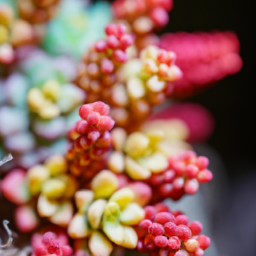
Creating Visual Interest through Contrasting Plant Textures
When it comes to creating a visually stunning garden or landscape, one of the most effective techniques is to incorporate contrasting plant textures. By combining plants with different textures, you can add depth, interest, and a unique visual appeal to your outdoor space. In this guide, we will explore the art of mixing plant colors and textures, focusing specifically on creating visual interest through contrasting plant textures.
Understanding Plant Textures
Before we delve into the art of mixing plant textures, it is important to understand what plant textures are and how they can be categorized. Plant textures refer to the surface quality of a plant, including the size, shape, and arrangement of its leaves, stems, and flowers. These textures can range from fine and delicate to coarse and bold, and everything in between.
When categorizing plant textures, they are often classified into three main categories: fine, medium, and coarse. Fine textures are characterized by small, delicate leaves and a soft appearance. Medium textures have a balance between fine and coarse, while coarse textures feature large, bold leaves or stems that create a strong visual impact.
Now that we have a basic understanding of plant textures, let’s explore how we can create visual interest by combining plants with contrasting textures.
Combining Contrasting Plant Textures
When it comes to combining plants with contrasting textures, the key is to find a balance between different textures to create a harmonious and visually appealing composition. Here are some steps to help you achieve this:
1. Identify the dominant texture: Start by identifying the dominant texture you want to showcase in your garden or landscape. This will serve as the foundation for your composition. For example, if you prefer a garden with a fine texture, you can choose plants with delicate leaves and flowers as your dominant texture.
2. Choose contrasting textures: Once you have identified the dominant texture, it’s time to select plants with contrasting textures. Look for plants that have a different texture than your dominant texture. For instance, if your dominant texture is fine, you can choose plants with medium or coarse textures to create contrast. This will add visual interest and prevent your garden from appearing monotonous.
3. Consider foliage and flowers: When selecting plants with contrasting textures, consider both foliage and flowers. Some plants may have fine foliage but bold, showy flowers, while others may have coarse foliage but delicate, intricate flowers. By combining plants with contrasting foliage and flower textures, you can create a visually dynamic and captivating display.
4. Pay attention to colors: In addition to textures, colors also play a crucial role in creating visual interest. When mixing plant textures, consider how the colors of different plants interact with each other. Opt for a color palette that complements and enhances the textures you have chosen. For example, pairing plants with fine textures in shades of pastel with plants featuring coarse textures in vibrant, bold colors can create a striking contrast.
5. Consider plant heights and shapes: Lastly, when combining plants with contrasting textures, consider their heights and shapes. Varying the heights and shapes of plants will further enhance the visual interest and create a sense of depth in your garden. For instance, you can pair tall plants with coarse textures with shorter plants with fine textures to create a layered effect.
By following these steps and experimenting with different combinations, you can master the art of mixing plant colors and textures to create a visually captivating garden or landscape. Remember, the key is to find a balance between different textures, colors, heights, and shapes to achieve a harmonious and engaging composition.
So go ahead, unleash your creativity, and transform your outdoor space into a stunning masterpiece by incorporating contrasting plant textures!
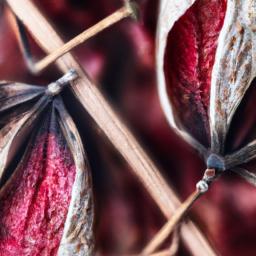
Exploring Different Techniques for Mixing Plant Colors and Textures
Creating a visually stunning garden involves more than just choosing beautiful plants. It’s the art of mixing plant colors and textures that can truly elevate your garden to the next level. By combining various hues and textures, you can create a harmonious and captivating landscape. In this guide, we will explore different techniques for mixing plant colors and textures to help you achieve a breathtaking garden.
Understanding Color Theory
Before diving into the techniques, it’s important to have a basic understanding of color theory. Colors can be categorized into warm (red, orange, yellow) and cool (blue, green, purple) tones. Warm colors tend to create a sense of energy and excitement, while cool colors evoke a feeling of calmness and tranquility.
When mixing plant colors, you can either opt for a monochromatic scheme, where you stick to variations of a single color, or a complementary scheme, where you combine colors that are opposite each other on the color wheel. Monochromatic schemes create a harmonious and soothing effect, while complementary schemes provide a vibrant and contrasting look.
Now, let’s dive into the techniques for mixing plant colors and textures:
1. Layering Plants with Varied Heights
One effective technique for mixing plant colors and textures is to layer plants with varied heights. By combining plants of different heights, you can create visual interest and depth in your garden. Start by selecting a tall focal point plant, such as a small tree or a tall shrub, and surround it with shorter plants. This layering technique adds dimension and allows you to showcase a range of colors and textures.
For example, you can pair the vibrant red flowers of a tall Salvia with the delicate purple blooms of a shorter Lavender. The contrasting heights and colors create a visually captivating scene. Additionally, consider incorporating plants with different leaf textures, such as the broad leaves of a Hosta alongside the feathery foliage of an Astilbe, to further enhance the texture mixing.
2. Creating Colorful Borders and Edges
Another technique to explore is creating colorful borders and edges within your garden. This technique involves planting plants with contrasting colors along the borders of your garden beds or pathways. It helps define the space and draws attention to the vibrant colors.
For instance, you can plant a row of yellow Marigolds along the edge of a flower bed filled with purple Petunias. The yellow and purple combination creates a striking contrast that immediately catches the eye. Additionally, you can experiment with using plants with different leaf textures, such as the spiky foliage of a Blue Fescue paired with the soft, velvety leaves of Lamb’s Ear, to add texture to the borders.
3. Incorporating Foliage Colors and Textures
While flowers often steal the spotlight, foliage can play a crucial role in mixing plant colors and textures. Many plants have leaves with unique colors and textures that can add depth and interest to your garden.
Consider incorporating plants with colorful foliage, such as the deep burgundy leaves of a Heuchera or the variegated foliage of a Coleus. These plants can serve as focal points or accents among the sea of green in your garden. Pair them with plants that have contrasting leaf textures, like the spiky leaves of an Ornamental Grass or the smooth leaves of a Fern, to create a visually captivating display.
4. Balancing Colors and Textures
While mixing plant colors and textures, it’s important to maintain a sense of balance. Too many contrasting colors and textures can create a chaotic and overwhelming effect. Aim for a harmonious blend of colors and textures that complement each other.
One way to achieve balance is by using a color wheel as a guide. Colors that are adjacent to each other on the color wheel, known as analogous colors, create a harmonious and soothing effect when paired together. For example, combining various shades of purple and blue can create a calming and cohesive look.
Additionally, consider the overall theme or mood you want to achieve in your garden. If you desire a vibrant and energetic atmosphere, opt for bold and contrasting colors. For a serene and calming ambiance, stick to a more monochromatic scheme with subtle variations of a single color.
By following these techniques and experimenting with different plant combinations, you can master the art of mixing plant colors and textures. Remember to consider color theory, layer plants with varied heights, create colorful borders, incorporate foliage colors and textures, and maintain a sense of balance. With practice and a keen eye for design, you’ll be able to create a visually stunning garden that reflects your unique style and personality.
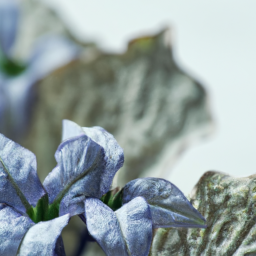
5 Tips and Tricks for Successful Plant Color and Texture Combinations
Introduction
Welcome to the world of plant color and texture combinations! Mixing different plant colors and textures in your garden can create a stunning visual impact and add depth and interest to your outdoor space. In this article, we will explore the art of mixing plant colors and textures, providing you with expert tips and tricks to help you create beautiful and harmonious combinations. Let’s dive in!
1. Understanding Color Theory
Before we delve into the practical aspects of mixing plant colors and textures, it’s important to understand the basics of color theory. Colors can be classified into warm (such as red, orange, and yellow) and cool (such as blue, green, and purple) tones. Warm colors create a sense of energy and vibrancy, while cool colors evoke a feeling of calmness and tranquility.
When mixing plant colors, consider using complementary colors, which are opposite each other on the color wheel. For example, pairing purple flowers with yellow foliage can create a striking contrast. Analogous colors, which are adjacent on the color wheel, can also work well together, creating a harmonious and cohesive look.
Remember to take into account the surrounding elements, such as your house or other hardscape features, when selecting plant colors. Choose colors that complement or contrast with these elements to create a visually pleasing composition.
2. Playing with Textures
Textures play a crucial role in creating visual interest in your garden. By mixing different plant textures, you can add depth and dimension to your landscape. There are three main types of plant textures: fine, medium, and coarse.
Fine textures, such as delicate ferns or grasses, create a soft and airy feel. They are perfect for adding a touch of elegance and subtlety to your garden. Medium textures, like most flowering plants, strike a balance between fine and coarse textures. They provide a sense of fullness and can be used as transitional elements between fine and coarse textures.
Coarse textures, such as large-leaved plants or spiky succulents, add a bold and dramatic element to your garden. They create focal points and draw attention. Mixing different textures can create a dynamic and visually pleasing composition. For example, pairing fine grasses with coarse-leaved plants can create an interesting contrast.
3. Creating Harmonious Combinations
Now that you have a basic understanding of color theory and textures, let’s explore some tips for creating harmonious plant combinations:
3.1 Balance is Key
When mixing plant colors and textures, it’s important to achieve a sense of balance. Avoid overcrowding your garden with too many colors or textures, as it can create a chaotic and overwhelming look. Instead, aim for a balanced composition by selecting a dominant color or texture and complementing it with secondary elements.
For example, if you have a vibrant red flower as your focal point, balance it with neutral-colored plants or foliage to create a visually pleasing contrast. This will allow your focal point to stand out while maintaining overall harmony in your garden.
3.2 Consider Seasonal Changes
Keep in mind that plant colors and textures can change throughout the seasons. Some plants may bloom with vibrant flowers in spring but have plain green foliage during the rest of the year. Consider the overall seasonal effect and plan your combinations accordingly.
For year-round interest, incorporate plants with different bloom times and foliage colors. This will ensure that your garden remains visually appealing throughout the year, even when certain plants are not in their prime.
3.3 Experiment and Learn from Nature
Don’t be afraid to experiment with different plant color and texture combinations. Nature itself is a great teacher and source of inspiration. Take a walk in a local park or visit a botanical garden to observe how plants naturally grow together.
Observe how colors and textures interact in the wild and try to replicate those combinations in your own garden. Experimentation will help you develop your own unique style and discover unexpected and beautiful combinations.
Conclusion
The art of mixing plant colors and textures is a creative and exciting endeavor. By understanding color theory, playing with textures, and following the tips and tricks provided in this guide, you can create stunning and harmonious plant combinations in your garden.
Remember to consider balance, seasonal changes, and to embrace experimentation. With practice and observation, you will become an expert in the art of mixing plant colors and textures, transforming your garden into a work of art.
Frequently Asked Questions (FAQ)
1. What is the art of mixing plant colors and textures?
The art of mixing plant colors and textures involves combining different plants with varying colors and textures to create visually appealing and harmonious plant arrangements.
2. Why is it important to consider plant colors and textures?
Considering plant colors and textures is important as it adds depth, interest, and balance to your garden or indoor space. It allows you to create stunning visual compositions and evoke specific moods or themes.
3. How can I mix plant colors effectively?
Effective mixing of plant colors involves considering color theory principles such as using complementary or analogous colors, creating contrast, and balancing warm and cool tones. Experimenting with different combinations is key.
4. What are some examples of plant textures?
Plant textures can range from fine and delicate (such as ferns or grasses) to coarse and bold (like succulents or cacti). Other examples include smooth, glossy, fuzzy, spiky, or rough textures.
5. How can I create a harmonious plant arrangement?
To create a harmonious plant arrangement, consider combining plants with complementary textures and colors. Aim for a balanced distribution of different textures and colors throughout the arrangement.
6. Can I mix plants with different light requirements?
It’s important to consider the light requirements of plants when mixing them. While some plants may tolerate different light conditions, it’s generally best to group plants with similar light needs together to ensure they thrive.
7. What are some tips for mixing plant colors and textures in a small space?
In a small space, opt for plants with smaller sizes and more delicate textures to avoid overwhelming the area. Use lighter and brighter colors to create an illusion of space and consider vertical gardening techniques.
8. How can I experiment with plant colors and textures without a garden?
If you don’t have a garden, you can still experiment with plant colors and textures by creating indoor plant arrangements. Use pots of different sizes, shapes, and materials to add visual interest and select plants with varying colors and textures.
9. Are there any plant combinations to avoid when mixing colors and textures?
While there are no strict rules, it’s generally best to avoid plant combinations that clash or create a chaotic visual effect. For example, combining plants with extremely different textures or colors that clash can be overwhelming.
10. Where can I find inspiration for mixing plant colors and textures?
You can find inspiration for mixing plant colors and textures in gardening books, magazines, online platforms, and even by observing nature. Visiting botanical gardens or attending gardening events can also provide ideas and inspiration.
Emily Bloomfield is an interior designer and horticulturist specializing in incorporating indoor plants into interior spaces. With a background in both design and plant science, Emily offers a unique perspective on creating harmonious living environments through the synergy of greenery and aesthetics. Her creative ideas and innovative solutions make her a sought-after authority in the field.


